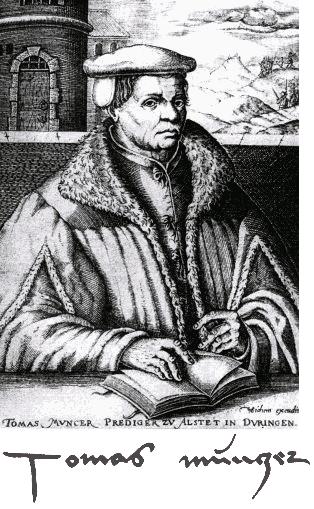First and foremost, the top two here, right and left.. The signature in the second image is, of course, Müntzer's.

The main image is used as the template for almost every other picture of Müntzer that you will find. Alas, it is not a contemporaneous portrait - it is an etching made in 1608 by one Christoffel van Sichem; his engraving may or may not have been a copy of a picture made by Hans Holbein the Younger, when the latter was resident in Basel. Unfortunately, all evidence suggests that Holbein had left for France some months before Müntzer turned up in Basel in late 1524.
Another, even fainter, possibility is that the original portrait was made by one of the 'three godless painters' (oh yes!) of Nürnberg, when Müntzer was (maybe) in that city in late 1524. Why the three painters were considered 'godless' is another story - but click here if you wish to know more.
It really is all very speculative. But it's all we have.
| | |
|---|
Views of towns, castles and churches.
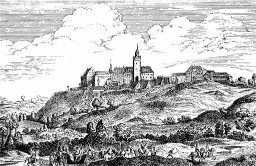
Here is a view (from 18th or 19th century?) of the castle above the small town of Allstedt in Thuringia, where Müntzer was preacher in 1523 and 1524.

Allstedt castle as it appears today. It was in this castle that Müntzer preached his famous 'Sermon to the Princes'
Erwin Meier (Wikicommons)

Zwickau - market-place (ca. 1850)

Zwickau - St Catherine's Church, where Müntzer preached in 1520-21 (you can see M's statue just in front of it)
André Karwath (Wikicommons)

A view (Mattheus Merian, 1650) of the town of Mühlhausen in Thuringia, scene of Müntzer's final activity.
Universitäts- und Landesbibliothek Düsseldorf

A photograph of Count Ernst of Mansfeld's residence at Heldrungen - this is where Müntzer was held captive after the defeat at Frankenhausen (possibly - but not necessarily - in the rounded tower on the left)
'Varus111' (Wikicommons 2006)
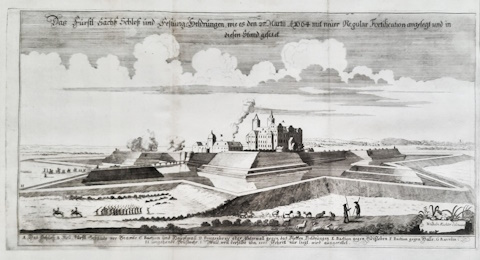
A view (Mattheus Merian, 1664) of the fortress of Heldrungen.
Universitäts- und Landesbibliothek Düsseldorf

A view (Mattheus Merian, 1650) of Frankenhausen in Thuringia; the hill on the left is where the battle took place, on 15 May 1525.
Universitäts- und Landesbibliothek Düsseldorf
|
Maps.

This map indicates the main theatres of the whole South German 'Peasants War'.

This is a rough map of Thuringia, indicating the location of Müntzer's main places of activity. For a more detailed map, using GoogleMaps and centred on Mühlhausen, click here.

Showing the course of the 1525 uprising in Thuringia.

The march-routes taken by the Princes' army approaching Frankenhausen
(courtesy Doug Miller)
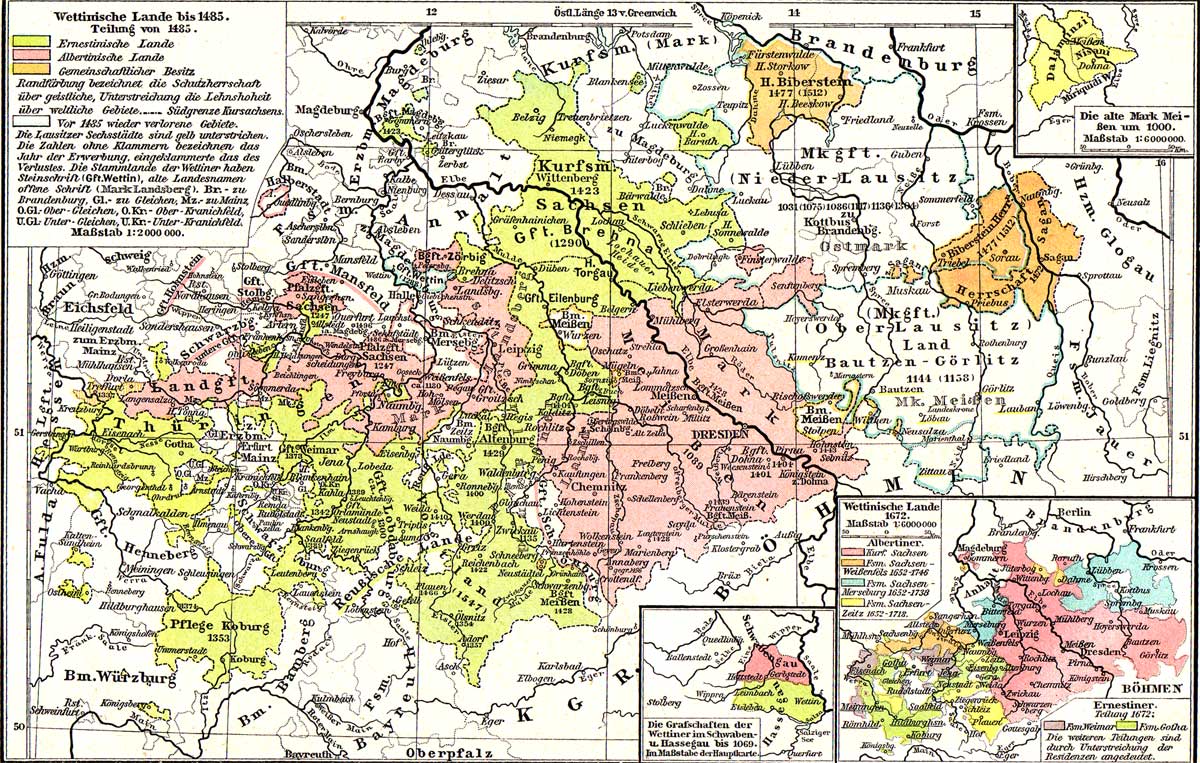
This map, drawn in the 19th century, gives a detailed view of the patchwork of land-ownership at around 1500.

And this one shows the Ernestine/Albertine split in the ruling house of Saxony, after 1485.
|
Statues and similar.
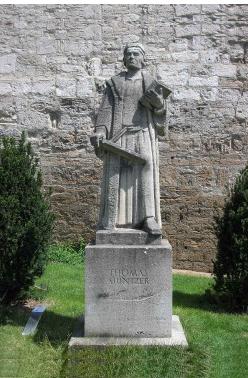
This first statue stands in Mühlhausen.Michael Sanders (Wikimedia)

This one is in his birthplace, Stolberg.
Stolberger Geschichts- und Traditionsverein e. V.

This - pretty jaunty - one is in Zwickau.
Tilo Hauke (Wikimedia)

A more sombre one, depicting Müntzer in captivity, at Heldrungen.
Stolberger Geschichts- und Traditionsverein e. V.

This house in Stolberg stands on the spot of the house he was born in (the original house burned down in 1851)
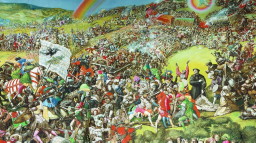
At Frankenhausen, scene of the final battle in 1525, there is now a museum dedicated to the Peasants' War in Thuringia. This image is one of several huge murals there, painted by Werner Tübke.
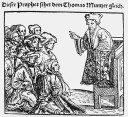
German chroniclers of an earlier era were quite happy to draw on their own creativity - here on far right is an image which is captioned This prophet looks quite like Thomas Müntzer...!
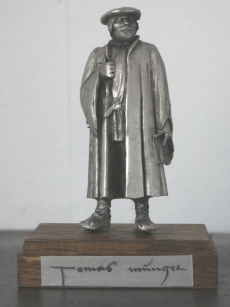
Professor Doug Miller has created this tiny figurine of Thomas Müntzer (6cm high), as part of a diorama of the battle of Frankenhausen.
|
Modern images of Müntzer.
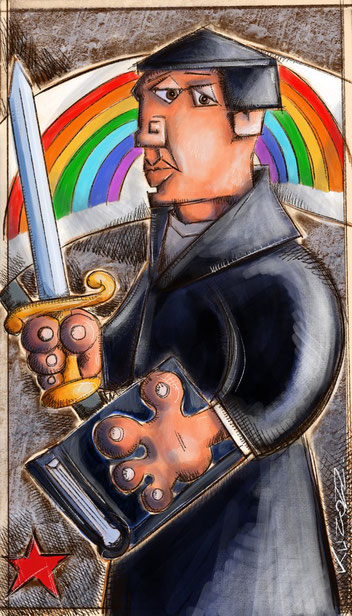
Müntzer with rainbow and sword

Omnia sunt Communia - all things are held in common. (Not actually one of Müntzer's beliefs!)
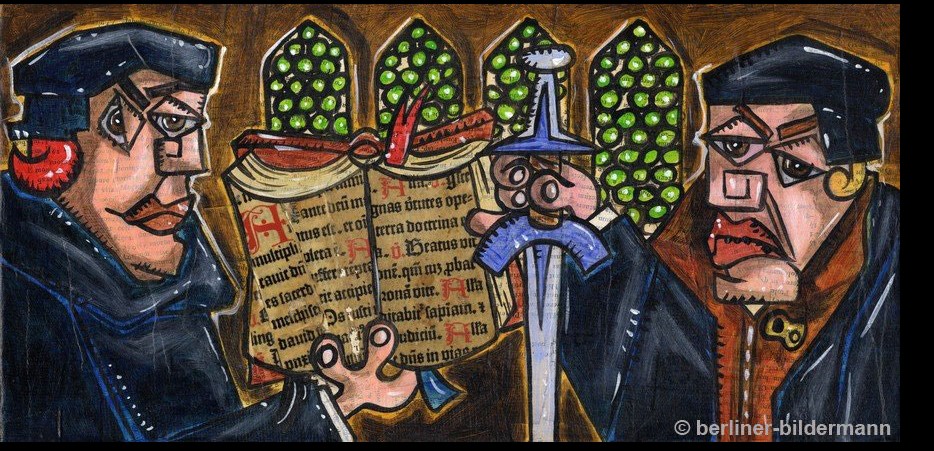
Martin Luther and Thomas Müntzer.
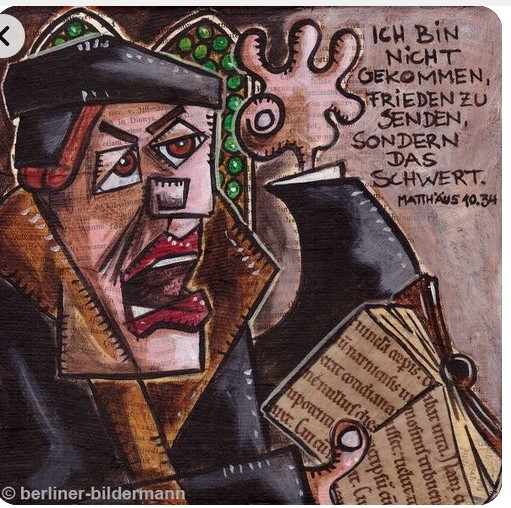
'I came not to send peace, but a sword!'
|
Commemorative items.
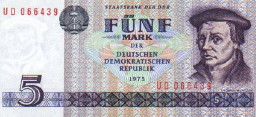
He has appeared on banknotes - here, a 5-Mark note from East Germany, issued in 1975, 450th anniversary of the Peasants' War...

...and been commemorated on medals (East Germany, 1989)...
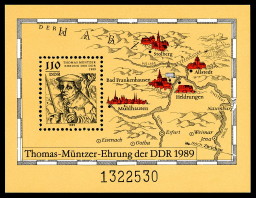
...and on some postage stamps from East Germany, 1975 and 1989
|
Books and letters.

The title-page of Martin Luther's pamphlet - A Shocking History and Judgement of God on Thomas Müntzer - which appeared just before the Battle of Frankenhausen. This was the first in a long, long line of Lutheran pamphlets demonising Müntzer.
München, Bayerische Staatsbibliothek

This is the title page of Müntzer's main liturgical work, the 'German Church Service' of 1523.
München, Bayerische Staatsbibliothek
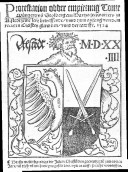
And this the title page of his 1524 pamphlet 'Protestation or Proposition'. Note that both of these documents were printed locally, in Allstedt.
München, Bayerische Staatsbibliothek

An incomplete facsimile of a letter from Ottilie von Gersen (Müntzer`s wife) to Duke Georg, 19th August 1525. It is not in her handwriting, but is a copy made by a contemporary secretary in the court of Landgrave Philipp of Hesse. The first three words read 'Durchlauchter hochgebornen Fürst' - Illustrious high-born Prince... - you can work out the rest for yourself!
|

